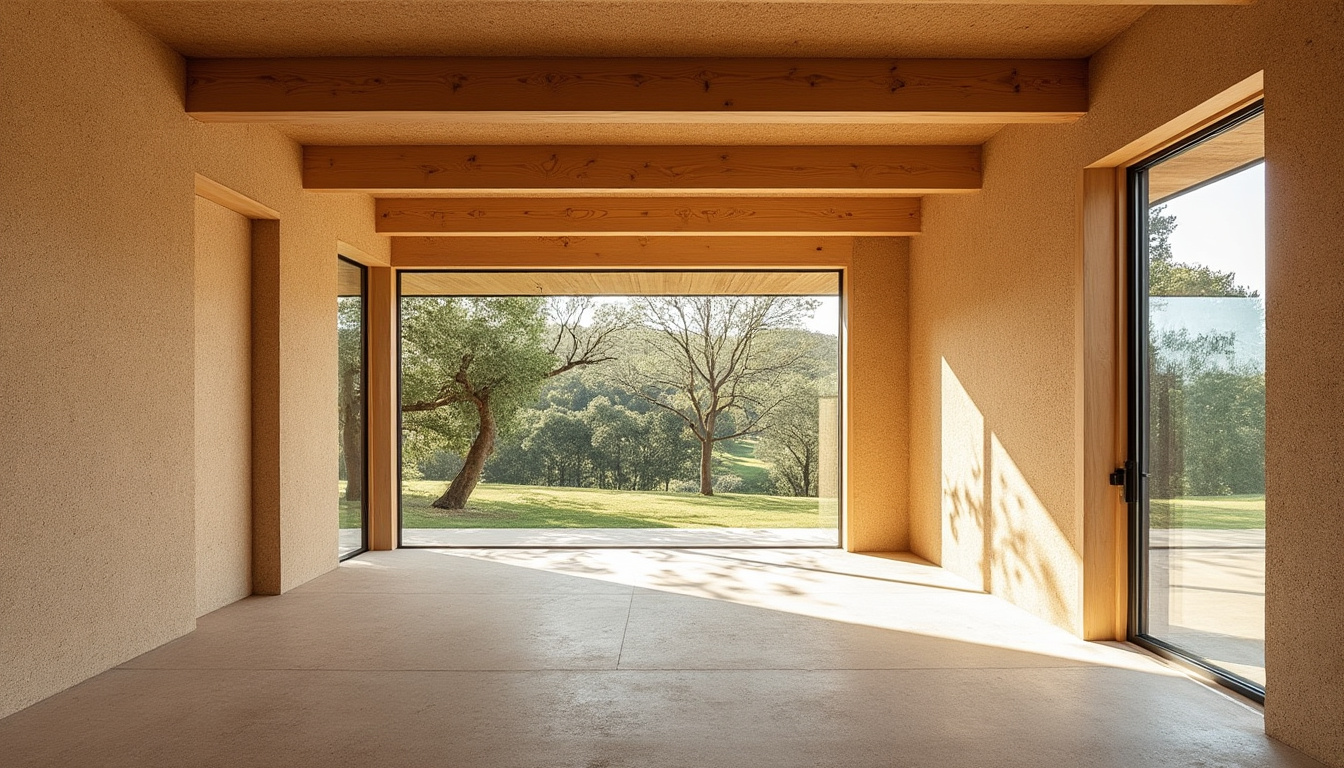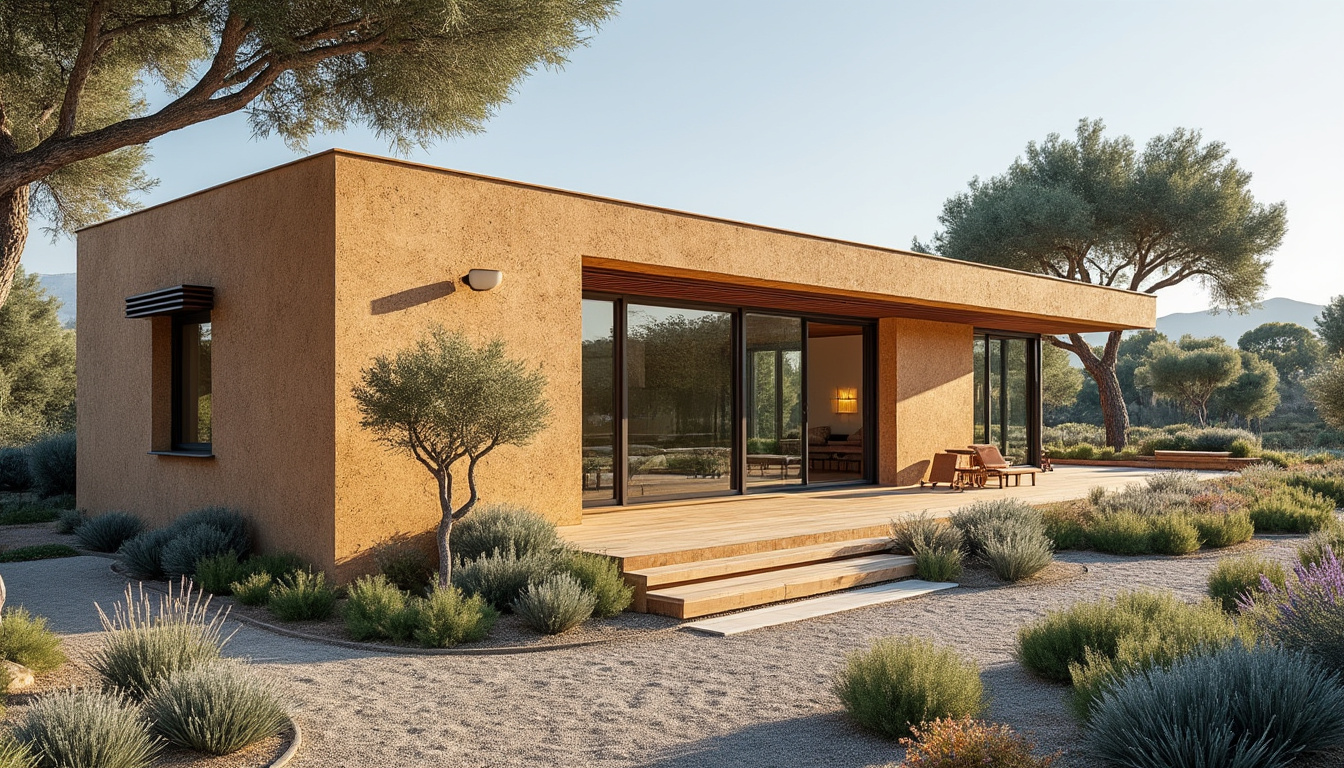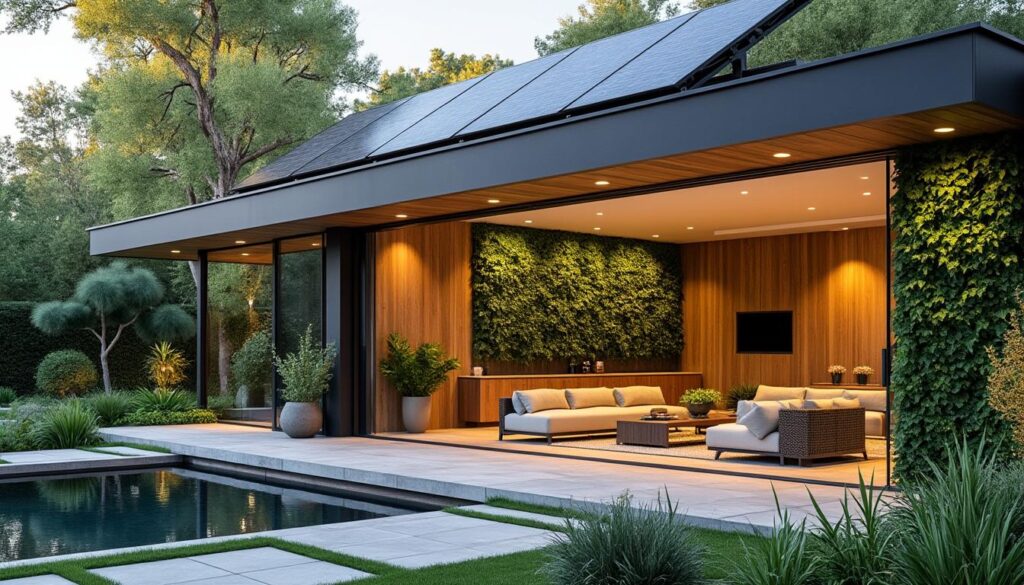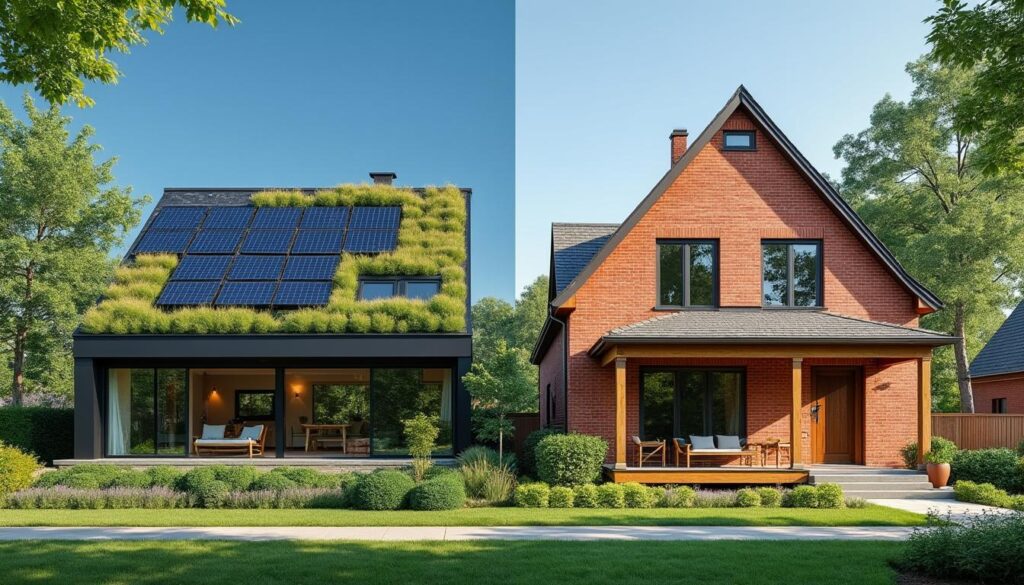Choosing the right materials is half the battle for a passive house: comfort all year round, low energy bills, and reduced environmental impact. Below is a practical, direct, and applicable guide to confidently decide what goes into your walls, insulation, and finishes.
| Short on time? Here’s the essentials |
|---|
| ✅ Prioritize natural insulation (cork, cellulose, sheep’s wool) for high thermal comfort and lower carbon footprint 🌱 |
| ✅ Combine materials (wood structures, efficient windows, airtight membranes) to achieve passive standard 🧩 |
| ✅ Check certifications such as FSC, EPD, Natureplus, and low VOC in paints and adhesives 🔍 |
| ✅ Design for the climate: moisture resistance, shading, and proper natural ventilation ☀️💨 |
| ✅ Plan for maintenance and reparability to extend lifespan and reduce costs over time 🛠️ |
Passive house: fundamentals and why choosing sustainable materials makes all the difference
A passive house is designed to use very little energy for heating and cooling, maintaining stable thermal comfort. This is achieved through a “package” of solutions: robust insulation, controlled air tightness, high-performance windows, and well-managed solar gains. Sustainable materials play a leading role because they enhance efficiency, reduce emissions, and improve indoor health.
In practice, the goal is to reduce heating and cooling needs to a minimum, relying on a well-insulated and infiltration-free envelope. When materials are well chosen, the house retains heat in winter and blocks heat in summer, requiring little from mechanical systems. At the same time, materials such as cork, wood fiber, and lime plasters provide natural moisture regulation, preventing mold and discomfort.
What defines the performance of a passive house
Four pillars guide the choices: efficient thermal insulation, air tightness, highly insulating windows and doors, and minimized thermal bridges. The sum of these decisions determines comfort and consumption over decades.
- 🔥 Powerful insulation: materials with low conductivity (λ) and the correct thickness reduce heat loss.
- 🧵 Air tightness: membranes, tapes, and seals prevent infiltration and cold drafts.
- 🪟 Efficient glazing: double/triple glazing and quality frames maintain comfort.
- 🧊 Thermal bridges: well-resolved construction details prevent condensation and waste.
By 2025, the demand for eco-friendly houses grew because families want predictable bills and indoor well-being. A useful example: the Silva Family, on the coast, chose expanded cork for the ventilated façade and blown cellulose for the roofing. The result was a cooler summer without air conditioning and a comfortable winter with minimal heating. In addition to comfort, there was improvement in acoustics and indoor air quality, thanks to low-emission materials.
Why sustainable materials raise the standard
Natural materials have lower embodied energy, better hygrothermal performance, and are often repairable and recyclable. Choosing them is a technical and ethical decision: less carbon, fewer toxins, and more durability. They also facilitate compliance with environmental certification goals and enhance property value.
- 🌱 Less emissions: certified wood, cork, and lime reduce the carbon footprint.
- 😌 Health: eco-friendly paints and low VOC adhesives prevent odors and allergies.
- 🔁 Life cycle: recyclable materials and dismantlable systems reduce waste.
- 💶 Economy: savings on energy and maintenance over decades.
By understanding these fundamentals, material selection shifts from being a catalog of trends to a concrete strategy for comfort, efficiency, and longevity.

Practical criteria: how to choose sustainable materials for a passive house without falling into greenwashing
The right choice starts with clear and measurable criteria. Instead of being guided by vague labels, assess thermal performance, life cycle, origin, environmental impact, and occupant health. These factors, together, guide a smart budget and avoid regrets during construction.
Thermal performance and comfort
Look for low thermal conductivity (λ), good density when necessary, and the ability to dampen thermal peaks. Insulators like cork, cellulose, and wood fiber combine good λ with mass and hygroscopic capacity, stabilizing temperature and humidity.
- 🧮 λ and thickness: combine number and design; a better λ can reduce thickness and costs.
- 🌬️ Wind resistance: fundamental for ventilated facades on the coast.
- 🧊 Thermal inertia: massive materials help in summer, delaying peak heat.
Life cycle, origin, and environmental impact
Prioritize local and renewable materials, with EPD (Environmental Product Declaration). Certified wood (FSC/PEFC), Portuguese cork, natural hydraulic lime, and recycled metals show good results over their life cycle.
- 🧭 Proximity: short transport reduces emissions and logistical risks.
- ♻️ Recycled content: recycled steel/aluminum and repurposed glass make a difference.
- 🧩 Reuse: considering disassembly from the design stage simplifies circularity.
Health, air quality, and certifications
Paints, varnishes, adhesives, and foams can release VOCs. Prefer low/zero-VOC products with environmental labels (e.g., Natureplus, EU Ecolabel) and check technical data sheets. In insulation, avoid harmful additives; in wood panels, ensure low formaldehyde.
- 🩺 VOC: demand reliable reports and labels.
- 📜 Certifications: FSC/PEFC (wood), EPD, Natureplus, ISO 14001 (manufacturer’s environmental management).
- 🧪 Compatibilities: sealants and membranes must work together without reactions.
To facilitate comparison, the table below summarizes common materials in passive houses and key points.
| Material 🌿 | Application 🏡 | λ (W/m·K) 📏 | Moisture regulation 💧 | Typical certification 🔖 | CO₂ impact 🌍 | Notes ⭐ |
|---|---|---|---|---|---|---|
| Cork | Façade, roofing, floor | 0.037–0.040 | Good (hygroscopic) 👍 | EPD, Natureplus | Low ✅ | Local in PT; good acoustic insulation |
| Cellulose | Walls and roofs (blown) | 0.036–0.040 | Good 💧 | EPD, low-VOC labels | Low ✅ | Excellent void filling |
| Sheep wool | Insulation in rolls | 0.035–0.040 | Very good 🐑 | Natureplus | Very low ✅✅ | Absorbs odors; requires anti-mite treatment |
| Wood fiber | Plywood in walls and roofs | 0.038–0.045 | Good 💧 | EPD | Low–medium ⚖️ | High thermal inertia in summer |
| CLT/Laminated wood | Structure | — | Medium | FSC/PEFC | Low vs. concrete ✅ | Fast assembly; stored carbon |
| Lime (mortar) | Coatings/laying | — | Excellent 💧 | — | Low ✅ | Vapor-permeable; antibacterial |
By adhering to these criteria, selection gains technical rigor and transparency, limiting the risk of greenwashing and ensuring real comfort in daily life.
To see applied examples and execution details, it’s worth researching reference projects and recent case studies.
Concrete examples: sustainable materials for each element of a passive house envelope
The right combination depends on climate, budget, and construction method. Below are balanced solutions by element, focusing on thermal performance, air tightness, and low emissions.
Structure with low impact and high efficiency
Structures made of CLT or glued laminated wood reduce embodied carbon and speed up construction. When the design requires thermal mass, it can be combined with internal walls made of soil-cement bricks or dense wood fiber panels to increase inertia in summer.
- 🪵 Certified wood (FSC/PEFC): renewable, lightweight, excellent for highly insulated envelopes.
- 🧱 Soil-cement: reduces cement, adds mass, and offers good hygrothermal performance.
- 🔩 Recycled metals: use where necessary, prioritizing recycled content.
Natural thermal and acoustic insulation
For walls, roofs, and slabs, cork, cellulose, and wood fiber offer a balance between λ, mass, and moisture regulation. In roofs, the blown cellulose fills voids, reduces thermal bridges, and improves acoustics.
- 🌰 Expanded cork: ideal for ventilated facades and under floors; moisture-resistant.
- 📦 Cellulose: excellent cost-benefit and performance in summer.
- 🌲 Wood fiber: rigid panels for thermal continuity and vapor diffusion.
Air tightness: the “secret” of passive comfort
Without air tightness, the best insulation fails. Apply smart membranes (variable vapor), adhesive tapes, and sealants at junctions between materials. Schedule at least two Blower Door tests: one intermediate (to correct faults) and one final (to confirm targets).
- 🧻 Membranes and vapor barriers: interior with Sd appropriate to the climate and wall composition.
- 🩹 Tapes and sleeves: sealing at electrical and plumbing crossings.
- 🔍 Detail inspection: corners, roller box enclosures, and joints are critical points.
High-performance windows and doors
Opt for double/triple glazing with low emissivity and frames in wood/aluminum. The installation in insulated openings and without thermal bridges is as important as the U value of the set. In noisy areas, modules with better Rw enhance comfort.
- 🪟 Low window U-value: the lower, the better the performance.
- 🧊 Thermal bridge breakage: profiles and insulating tapes around the perimeter.
- 🌗 Shading: brise-soleils, blinds, and eaves to control solar gains.
Healthy and durable finishes
Lime-based coatings allow for “breathable” walls and combat fungi; eco-friendly paints with low VOC protect air quality. Flooring made of certified wood, bamboo, or tiles with recycled content close the cycle with aesthetics and low maintenance.
- 🎨 Low/zero-VOC paints: improve indoor air quality.
- 🧱 Lime mortars: vapor-permeable, excellent for humid areas.
- 🪜 Durable flooring: certified solid wood or eco-friendly ceramics.
Want to see references and suppliers? Research projects using cork and wood in Portugal and certified Passive House cases.

Climate resilience, seasonal variations, and how materials help manage indoor humidity
Climates with hot summers and humid winters require solutions that go beyond λ. The house needs to “breathe” in a controlled way, protecting both the building and the occupants. Materials with hygroscopic capacity moderate humidity peaks, while well-ordered layers allow for vapor diffusion to the outside without compromising air tightness.
Strategies by climate and season
In coastal areas, breezes and salt require protection of frames and finishes. Internally, heat peaks demand thermal mass and shading. In both cases, the balance between vapor barriers and smart brakes is decisive to avoid hidden condensations.
- ☀️ Summer: thermal mass + shading reduce peaks and improve thermal delay.
- 🌧️ Winter: maintaining air tightness and reducing thermal bridges prevents interstitial condensation.
- 🍃 Mid-seasons: cross natural ventilation can provide comfort without energy.
Layers that work together
Imagine the wall as a system: exterior resistant to rain and UV; insulating core and eventually hygroscopic; hermetic interior with a variable membrane that helps dry the structure throughout the year. This “sandwich” reduces risks and extends lifespan.
- 🧱 Exterior coating: cork and treated wood with adequate protection.
- 🧼 Drainage layer: prevents stagnant water behind panels.
- 🧩 Details: drip profiles, finishes, and ventilation of facades.
Air quality and sensory comfort
Materials like lime and wood contribute to a stable and healthy microclimate. With mechanical ventilation with heat recovery (MVHR), the air is constantly renewed, heat is recovered, and CO₂ and humidity levels are controlled, reducing mold and odors.
- 💨 MVHR: filters pollen, reduces VOCs, and maintains balanced humidity.
- 🧪 Inert finishes: avoid emissions and reactions in the long term.
- 🛡️ Well-protected wood: natural treatments increase resilience without toxins.
A project that considers seasonality, wind, rain, and salinity chooses materials better and avoids surprises in the first years of use. Resilience is not an extra; it is a central part of passive performance.
To delve deeper into the topic of humidity, follow practical demonstrations and hygrothermal simulations.
From paper to construction: objective steps to buy, install, and maintain sustainable materials in a passive house
With clear concepts, it’s time to transform intentions into construction. The way forward involves detailed planning, well-verified purchases, careful execution, and straightforward maintenance. This way, the investment pays off for decades.
Smart purchasing and origin verification
Before closing orders, cross-check EPD, technical data sheets, and certifications. Prioritize local suppliers with a history of quality and supply chain. For wood materials, confirm FSC/PEFC. For paints and adhesives, demand low VOC and independent testing.
- 🧾 Checklist: EPD + certification + technical sheet + warranty.
- 📦 Batches and traceability: minimize variations in construction.
- 🌍 Short logistics: reduces emissions and delays.
Quality execution and testing
Form a team experienced in bioconstruction and air tightness. Details are valuable: continuous tapes, membranes without tears, well-treated joints. Schedule at least two Blower Door tests: one intermediate (to correct faults) and one final (to confirm targets).
- 🛠️ Sequence of layers: from the most “sensitive” to the most protected.
- 🔦 Inspections: use checklists for each work front.
- 🗑️ Waste management: separation and reuse on site ♻️
Maintenance, reparability, and long-term costs
Well-applied sustainable materials require little maintenance. The annual plan includes cleaning the MVHR filters, inspecting exposed seals, checking gutters, and repainting when necessary. Lime finishes allow for localized repairs without recreating everything.
- 🧽 Regular cleaning: filters, gutters, and exposed surfaces.
- 🩹 Localized repairs: save material and time.
- 📉 Total cost of ownership: lower energy + maintenance over 20–30 years.
Next practical step
Compile a dossier of your project with criteria, specifications, and target suppliers. Validate with your designer and request comparable quotes. For inspiration and technical content, visit Ecopassivehouses.pt and save the solutions that make sense for your project. A simple gesture to start today: list 5 priority materials (for example, insulation, membrane, sealants, windows, paint) and define the key criterion for each. Clarity now avoids reworks tomorrow.
- ✅ Immediate action: set target thicknesses for insulation and a U-value for windows.
- 🧭 Golden rule: air tightness + controlled ventilation = comfort with low energy.
- 💡 Reminder: the best material fails without good execution; detail builds the house.
Frequently Asked Questions
u003cstrongu003eDo natural materials insulate as well as synthetic ones?u003c/strongu003e
Yes, when properly sized. Cork, cellulose, and wood fiber achieve competitive λ and offer benefits of thermal inertia and moisture regulation, which are very useful in hot summers.
u003cstrongu003eDoes cork work in very humid areas?u003c/strongu003e
It performs well, especially in systems with drainage and ventilated façades. It is stable, resistant to fungi, and maintains performance if protected from direct liquid water.
u003cstrongu003eDoes air tightness “suffocate” the house?u003c/strongu003e
No. The house should be airtight and ventilated in a controlled manner by MVHR. Thus, the air is always renewed with heat recovery, maintaining higher quality than houses with infiltrations.
u003cstrongu003eAre certifications worth it, or do they raise costs without return?u003c/strongu003e
They are worth it because they bring transparency and predictability. EPD, FSC/PEFC, and low-VOC labels prevent poor choices, reduce risks, and may enhance property value.


